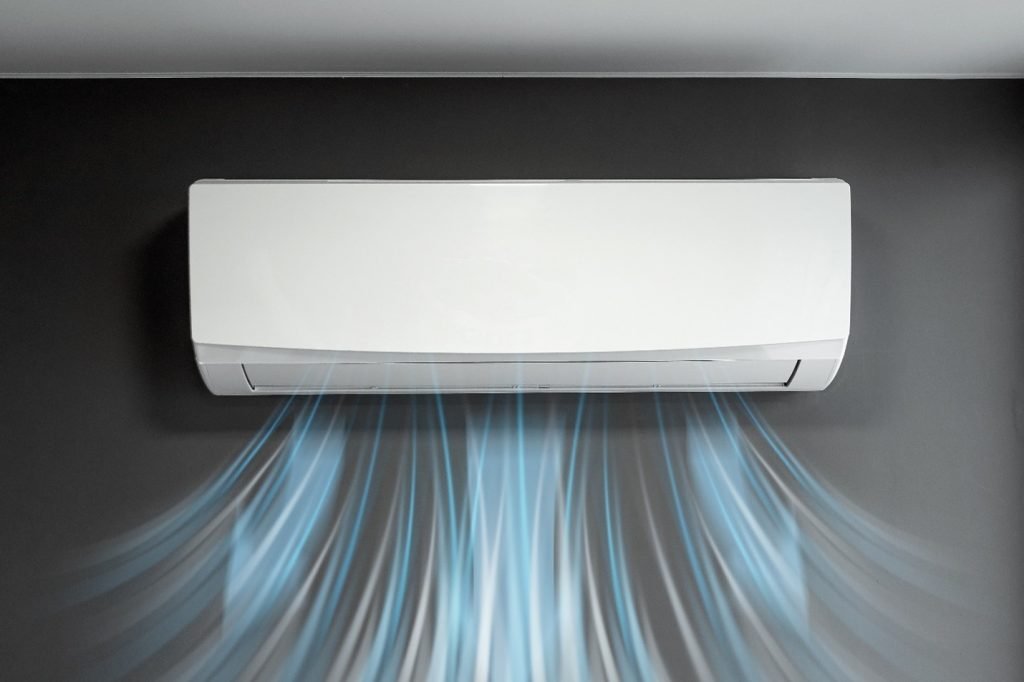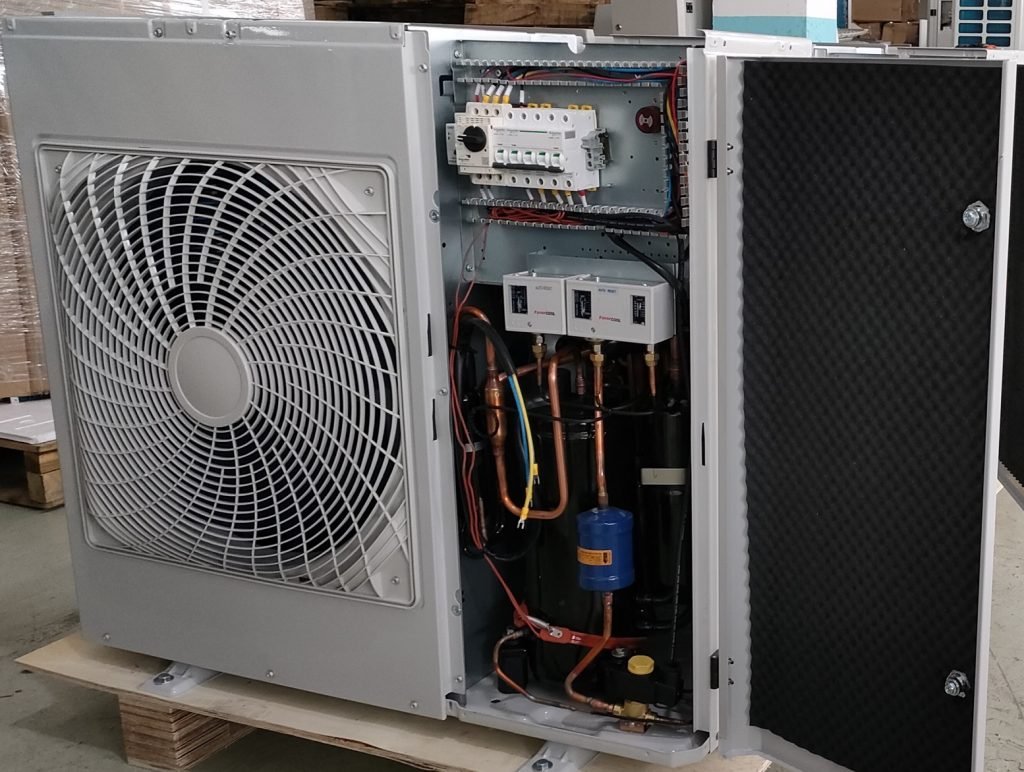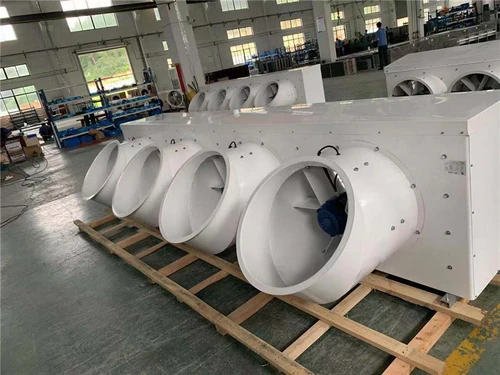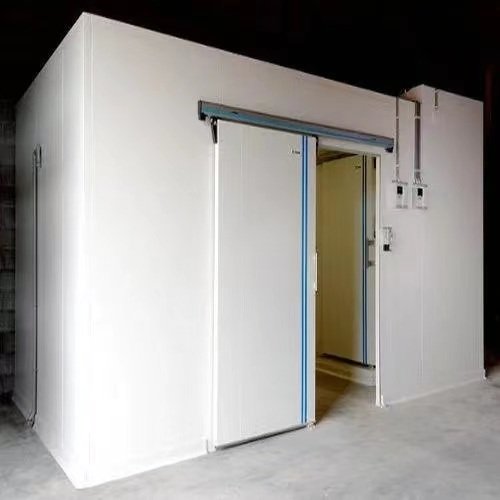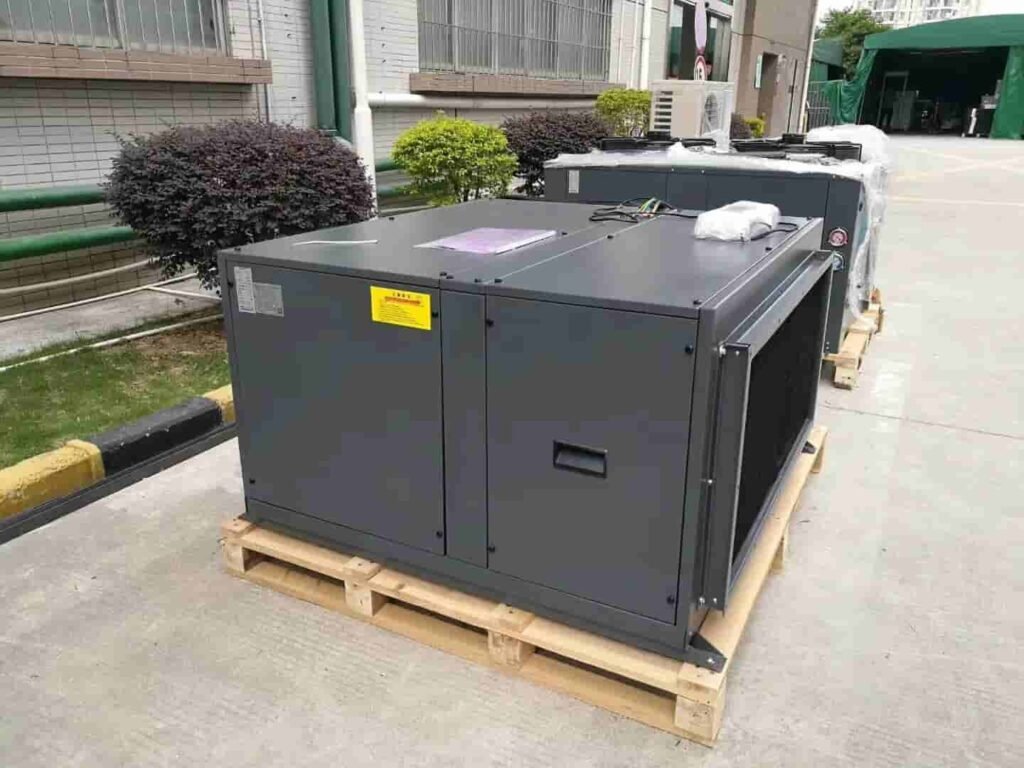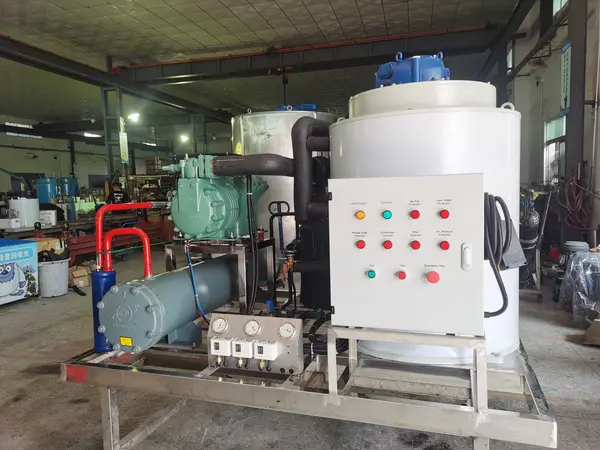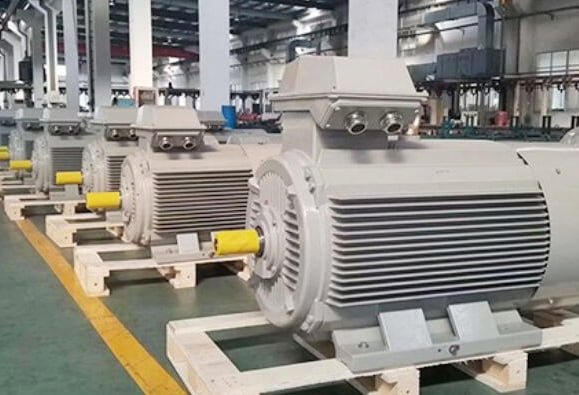How to read air conditioner nameplate parameters? What does KFR means?
Air conditioner nameplate is an important basis for understanding the performance, ข้อมูลจำเพาะ, and usage conditions of an air conditioner. The parameters on it involve key information such as cooling/heating capacity, energy efficiency rating, and power supply requirements. The model numbers of many air conditioners are a string of letters and numbers, which are not very easy to understand.
Whether you are choosing to buy an air conditioner or repairing one, it is necessary to understand the basic information of air conditioner from the nameplate.
Nameplate Reading
1. Main Parameter
Air conditioner nameplate usually located on the side or back of the unit. While it contains numerous parameters, their logic is clear and can be primarily divided into three categories: product model, performance parameters, and safety & certification information. The specific interpretation is as follows:
Product Model (Using “KFR-50GW/BP3DN8Y-PH200 (1)” as an example)
The model number is the identifier for the air conditioner. The letters and numbers can be used to quickly determine air conditioner’s type, การทำงาน, and specifications.
Starting letters (KFR): Represent air conditioner type and function (will explain in detail later).
Numbers (50): Represent the cooling capacity. The unit is “100ว”, meaning 50 indicates a cooling capacity of 5000W (1 HP ≈ 2500-2800W, so 5000W is 2.0HP).
Cooling capacity is the core parameter for selecting air conditioner and must be matched to the room area (เช่น., 10-15 sq.m is suitable for 1 เอชพี, 15-20 sq.m is suitable for 1.5 เอชพี, 25~35 sq.m is suitable for 2.0 เอชพี,เป็นต้น).
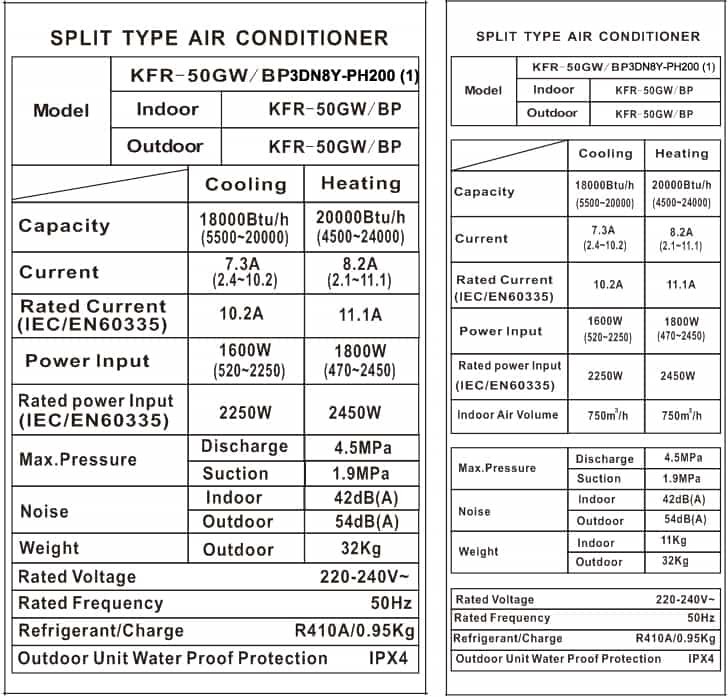
Subsequent letters:
-
G: Represents Wall-mounted indoor unit (Cabinet unit is “แอล”)
-
ว: Represents Outdoor unit
Additional function codes (เช่น., BP3DN8Y):
-
BP: อินเวอร์เตอร์ (non-inverter air conditioner models don’t have this identifier)
-
3ง: Represent 3D Airflow or Intelligent Temperature Control
-
เอ็น: Represent Eco-friendly Refrigerant (เช่น., R410a or R32)
-
Y: Remote control function
Energy Efficiency Label (เช่น., PH200 (1)):
-
The number “1” represents Level 1 ประสิทธิภาพการใช้พลังงาน (A lower level indicates higher energy savings).
Cooling/Heating Capacity: Unit is W. A higher value indicates stronger cooling/heating ability (เช่น., Cooling Capacity 5000W, Heating Capacity 5500W).
Cooling/Heating Power Input: Unit is W. Represents the power consumption during cooling/heating operation (lower power input means higher energy savings. This should be evaluated together with the energy efficiency rating for a more accurate assessment).
Auxiliary Electric Heating Power: Some air conditioners require auxiliary electric heating during heating mode. Unit is W. This power consumption is additional.
ความจุ: Cooling 18,000btu/h means rated cooling capacity (btu is an energy unit to measure air conditioner), 5,500~20,000btu/h means INVERTER air conditioner cooling capacity scope at different ambient temperature (non-inverter air conditioner no this scope).
Current: Cooling 7.3A means smooth operation current on cooling mode, 2.4~10.2A means INVERTER air conditioner cooling current scope at different ambient temperature (non-inverter air conditioner no this scope).
IEC/EN60335: International standard for air conditioner with excellent performance.
Energy Efficiency Ratio (APF/SCOP):
-
For inverter air conditioners, refer to APF (Annual Performance Factor).
-
For non-inverter air conditioners, refer to EER (Energy Efficiency Ratio).
A higher value indicates better energy efficiency (โดยทั่วไป, ระดับ 1 Energy Efficiency requires an APF ≥ 4.5).

Max. Pressure discharge (high side): 4.5 MPa
Max. Pressure suction (low side): 1.9 MPa
Refrigerant Charge: Max filling weight
KFR Meaning
The model number usually starts with “KFR” which is a common designation in systems like China’s GB standards. Here is a breakdown:
-
เค: Stands for “เครื่องปรับอากาศ”
-
เอฟ: Stands for “Split Type” This indicates the unit has separate indoor and outdoor units.
-
ร: Stands for “Heat Pump.” This means the unit can provide both cooling and heating.
ดังนั้น, “KFR” designates a Split-Type Heat Pump Air Conditioner.
A model that only has “KF” would be a cooling-only split system. The numbers following these letters often indicate the cooling capacity (see above).
KFRd: เดอะ “ง” represents auxiliary electric heating, meaning that in addition to the heat pump, it also supports auxiliary electric heating to enhance heating performance.
KC: Represents a window-mounted air conditioner, which is a single unit integrating both the indoor and outdoor sections, and installed in a window.
บทสรุป
Understanding the nameplate parameters of air conditioner is a fundamental skill for both users and installation or maintenance personnel.
Each piece of data on the nameplate reflects the unit’s performance, ความปลอดภัย, and energy consumption level.
Only by truly understanding these parameters can you select the right model, install it properly, and use it efficiently—allowing the air conditioner to deliver optimal performance and enjoy a longer service life.
มีคำแนะนำอะไรมั้ย?
ยินดีต้อนรับ ฝากข้อความหรือโพสต์ใหม่.



